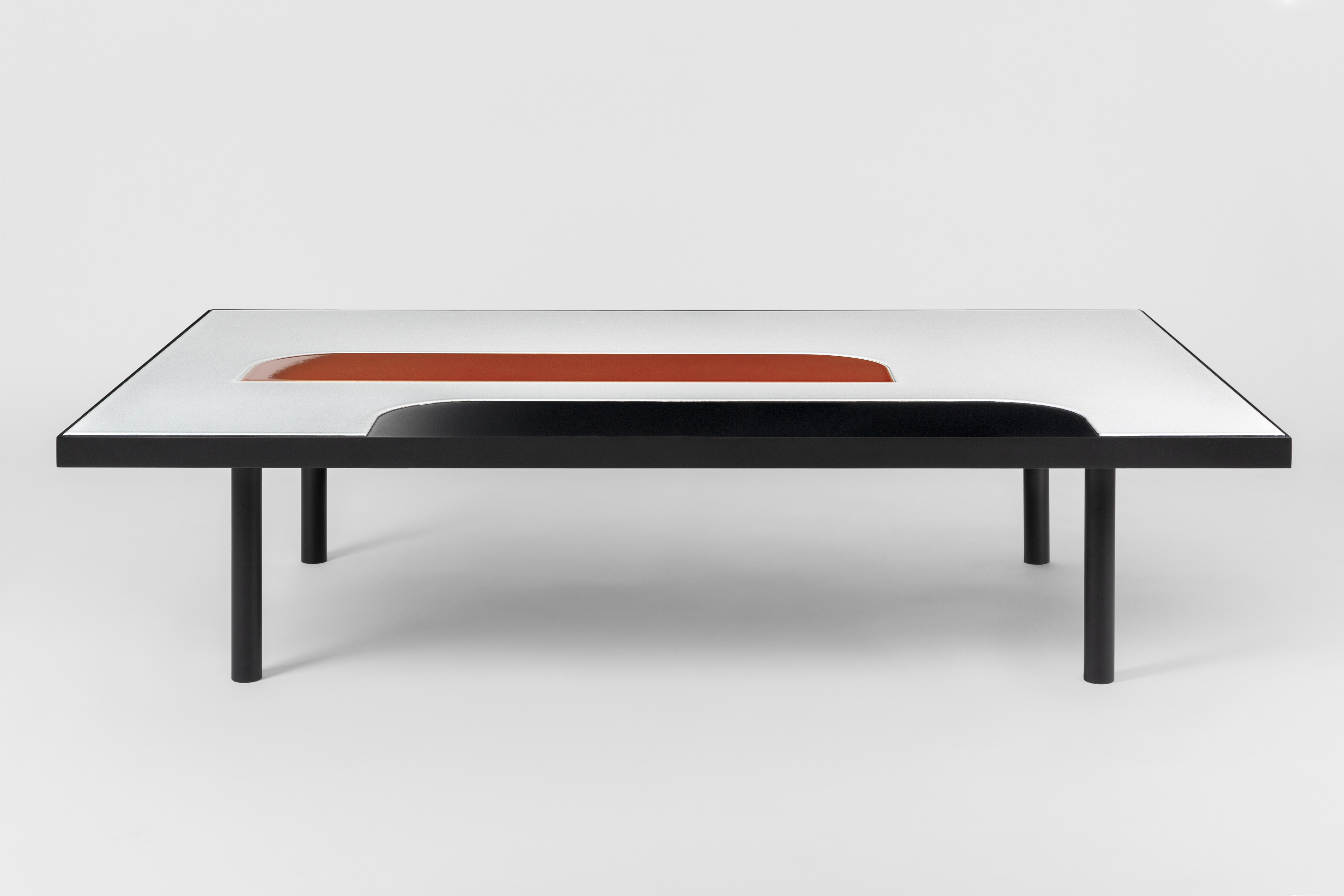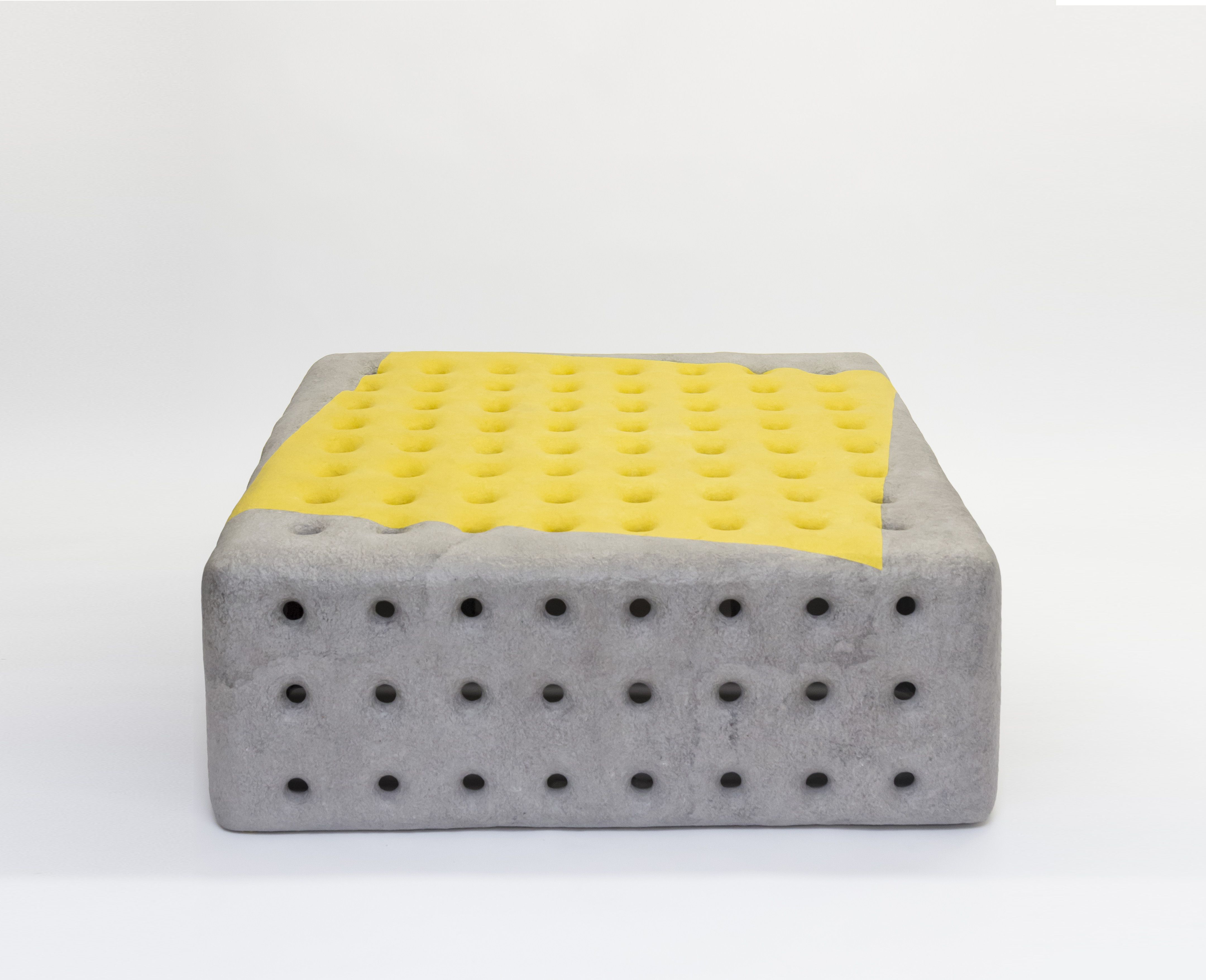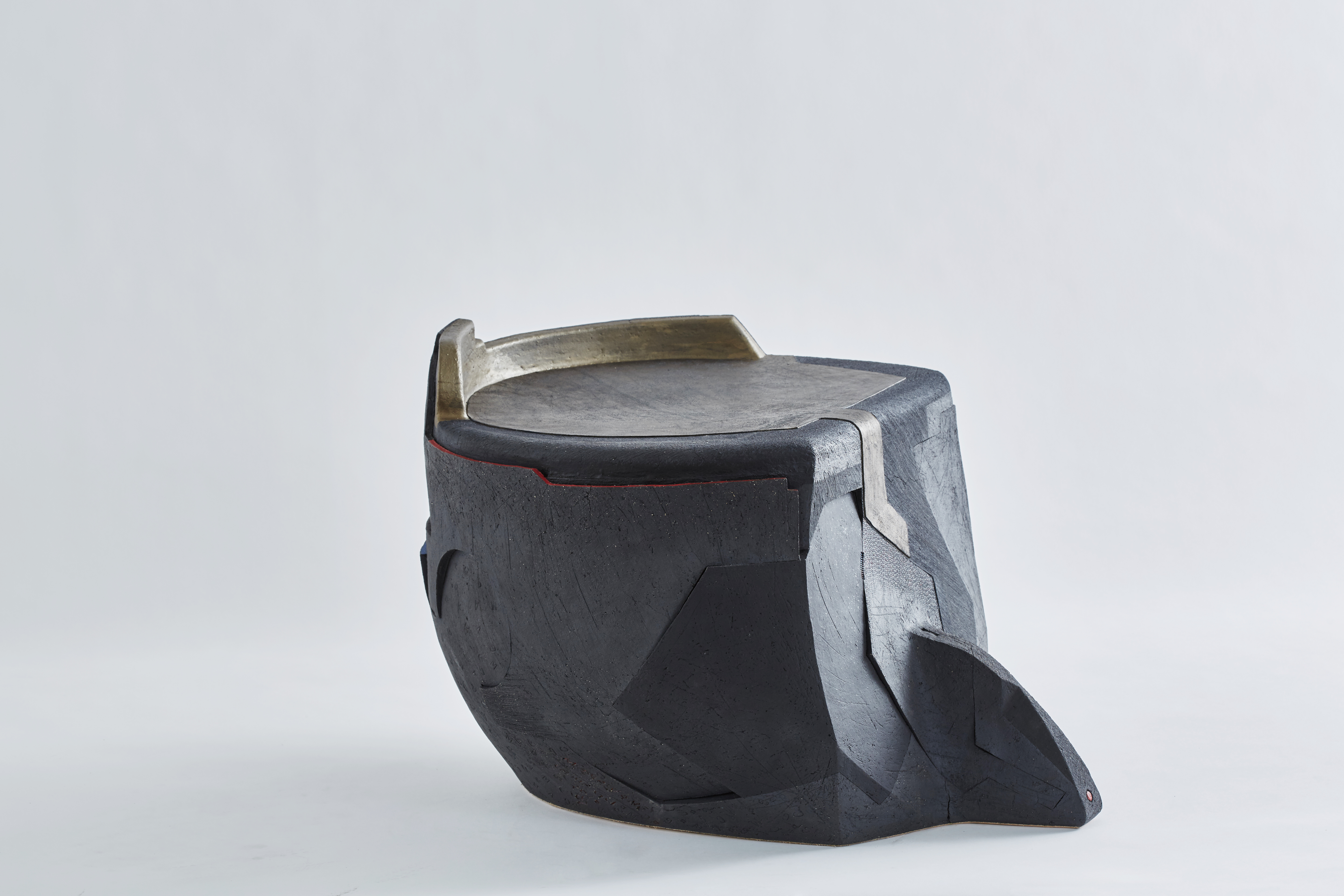Surface Effects
The coffee table, as a typology, is only about a century old. It was introduced in the 1920s, as a part of a new informality in entertaining — the daytime counterpart to the cocktail table, and just as much a part of Art Deco-era domesticity. The key thing about it, compositionally speaking, is that it is low to the ground, which has prompted designers to place unusual emphasis on its upper surface. While this orientation has certainly been challenged (Isamu Noguchi, for example, used transparent plate glass as a way to expose the sculptural undercarriages of his famed coffee tables), the tendency remains true today. Thus, for example, Pierre Charpin treats the enameled top of his Translation Capsula Coffee Table essentially as an abstract painting, hovering horizontally fifteen inches from the floor.
A teasing variation on this approach is seen in Thomas Barger’s Yellow Blanket, in which a vivid yellow square worthy of Ellsworth Kelly is visually draped across the overall form. For a full painterly treatment of the low table, however (nothing to do with coffee, this time), take a look at Andile Dyalvane’s Soze Nyanga. In this object, which also doubles as a stool — it features a lip that could be a vestigial back rest — he has carved and colored his way all around the object. The vocabulary is derived in part from the scarification practices of the Xhosa people, and this informs his holistic sensibility: take a surface as far as it will go, and it becomes a body in space.
DNA is a collaborative essay project, intertwining three gallery programs into a single, generative presentation.





